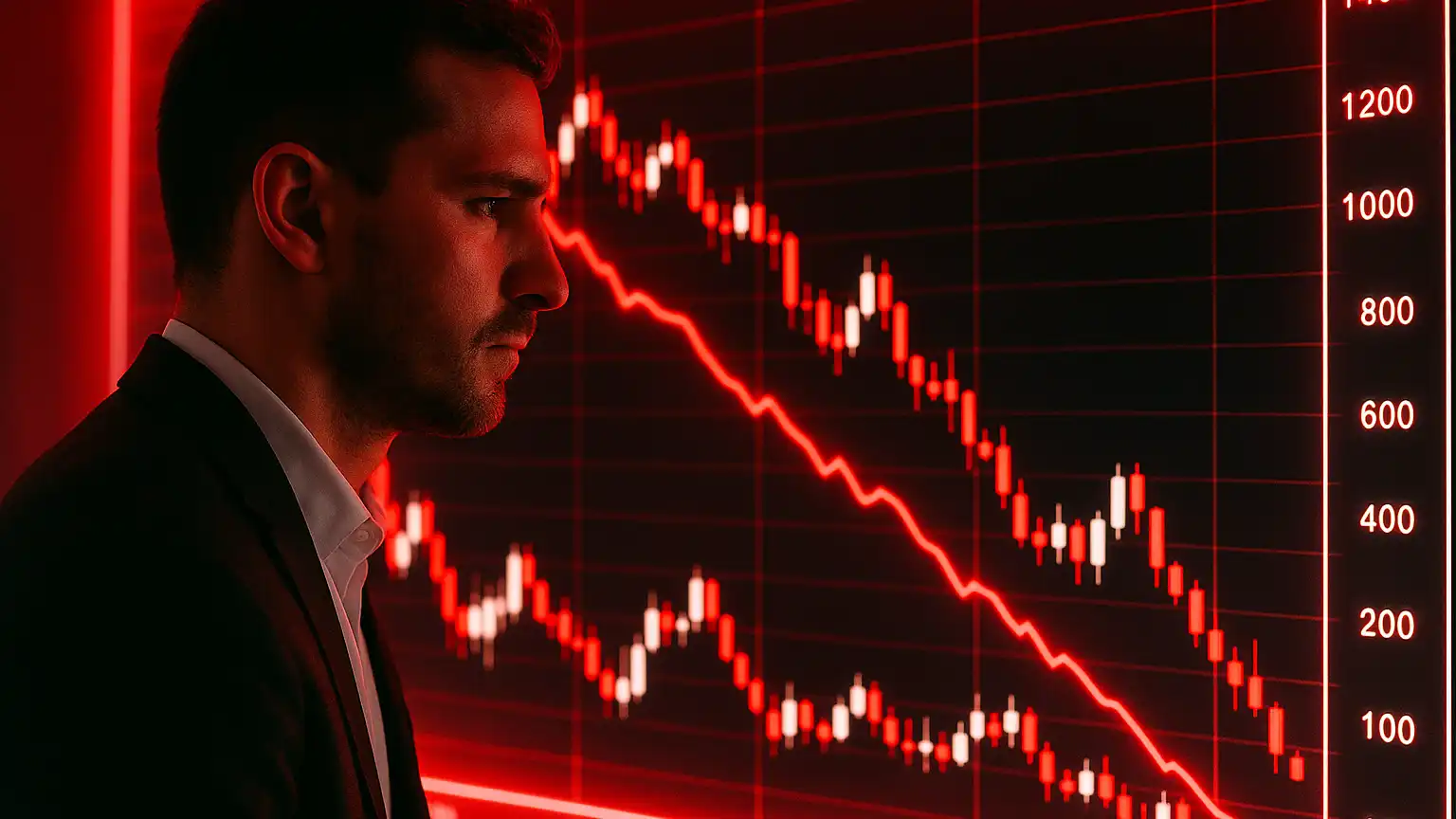As of October 16, 2025, the cryptocurrency market is exhibiting a predominantly bearish sentiment, influenced by escalating geopolitical tensions and significant market liquidations. Bitcoin (BTC) is trading at $110,619, reflecting a 1.77% decline from the previous close, with an intraday low of $110,292. Ethereum (ETH) has also experienced a downturn, currently priced at $4,004.76, down 2.87%, with a low of $3,937.68. These movements underscore the market’s sensitivity to external economic and political developments.
Impact of U.S.-China Trade Escalations on Crypto Markets
The recent intensification of the U.S.-China trade war has had a profound impact on the cryptocurrency landscape. On October 10, 2025, President Donald Trump announced a 100% tariff on Chinese imports, coupled with export controls on critical software. This announcement triggered a sharp decline in Bitcoin’s value, which fell by 8.4% to $104,782. Ethereum mirrored this trend, dropping 5.8% to $3,637. The broader market reacted similarly, with the S&P 500 index declining over 2%, highlighting the interconnectedness of global financial markets and digital assets.
Further exacerbating the situation, on October 14, both nations imposed new port fees on ocean shipping firms, intensifying the trade conflict. This led to Bitcoin reaching a low of $110,023.78 before a slight recovery to $113,129, marking a 2.3% decrease. Ethereum also declined to $3,900.80, ending the day down 3.7% at $4,128.47. Altcoins were particularly hard-hit, with some experiencing losses up to 80% on certain exchanges. Analysts noted that exchanges contributed to the market crash by liquidating leveraged positions when collateral requirements were unmet, underscoring the risks associated with high leverage in volatile markets.
Record Liquidations and Investor Hedging Strategies
The market’s volatility was further highlighted by the largest crypto liquidation event in history on October 10-11, totaling over $19 billion. This unprecedented liquidation was precipitated by the sudden announcement of increased tariffs and export controls, leading to panic selling and low liquidity. Bitcoin plummeted over 14% to a low of $104,783, while Ethereum dropped 12.2% to $3,436. Altcoins such as HYPE, DOGE, and AVAX suffered even steeper declines, with losses of 54%, 62%, and 70% respectively, before partial recoveries.
In response to this turmoil, investors have aggressively moved to hedge against further volatility. Options trading activity surged, with a notable increase in the purchase of put contracts, indicating a bearish outlook. Analysts observed a shift in sentiment, with short-term bearish perspectives dominating the market. While Bitcoin showed relative resilience due to sustained inflows, Ethereum and other altcoins exhibited significant drops. Experts believe that the recent crash has purged excess leverage from the market, but resistance levels remain a challenge for Bitcoin to reach new highs. Despite a slight recovery aided by a softened stance from President Trump, market caution prevails as the year-end approaches.
Market Sentiment Indicators Reflect Caution
The Crypto Fear & Greed Index, a metric that gauges market sentiment, has shown a notable shift towards fear. Between October 1 and October 6, the index climbed from 49 to 74, indicating a strong move towards greed as crypto prices surged. However, following the recent market downturns, the index has likely retreated, reflecting increased investor caution. Social media buzz, which had spiked around events like Hyperliquid’s Hypurr NFT airdrop, generating $90 million in trading volume, has also tempered, indicating a cooling of speculative interest.
Analyst commentary has turned more cautious. While some attribute Bitcoin’s earlier rally to factors like inflation concerns and currency devaluation, the recent geopolitical developments have introduced significant uncertainty. The substantial ETF inflows observed earlier in the month, with Bitcoin ETFs attracting $3.24 billion, have slowed, suggesting a more measured approach by institutional investors. This cautious stance is further evidenced by the rotation of capital from Ethereum to Bitcoin, signaling a preference for the perceived stability of the leading cryptocurrency during uncertain times.
Conclusion
The current cryptocurrency market is characterized by a bearish sentiment, driven by escalating U.S.-China trade tensions and unprecedented market liquidations. While Bitcoin and Ethereum have shown some resilience, the broader market remains cautious. Investors are increasingly seeking hedging strategies to mitigate potential losses, and market sentiment indicators reflect a shift towards fear. As geopolitical uncertainties persist, the cryptocurrency market is likely to experience continued volatility, necessitating a prudent and informed approach from investors.






